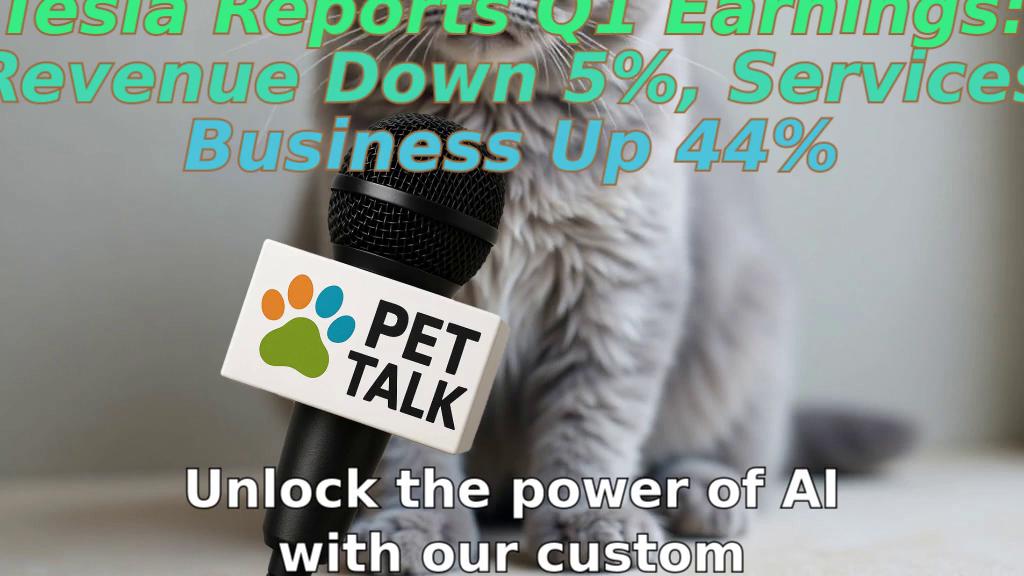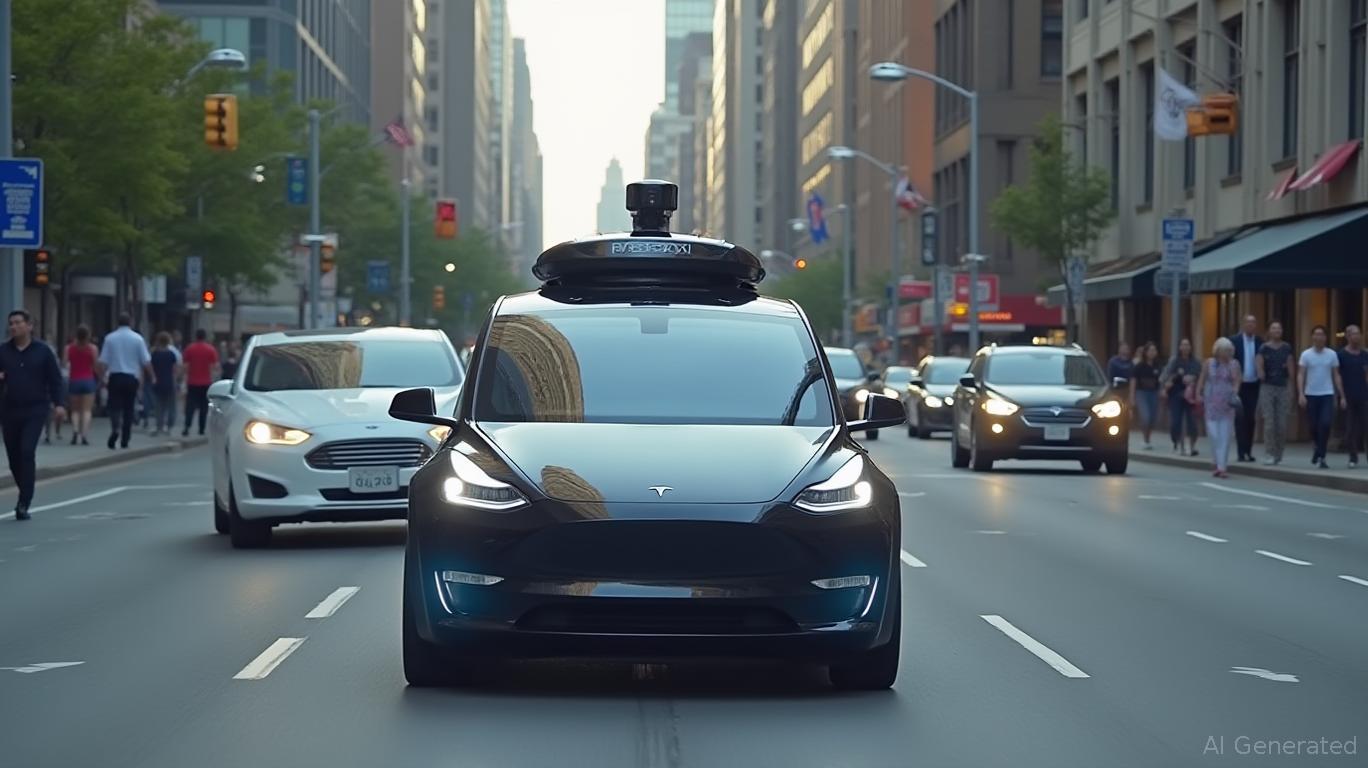Tesla's Q1 Earnings: Navigating Stormy Waters Amid Ambitious Horizons
Tesla’s Q1 2025 earnings report underscored a company at a crossroads. While its long-term ambitions—robotaxis, humanoid robots, and energy dominance—remain intact, near-term execution challenges, geopolitical headwinds, and brand risks have dented financial performance. Let’s dissect the numbers and assess whether Tesla’s stock presents an opportunity or a gamble.
Financial Performance: Missed Estimates, Margins Under Pressure
Tesla reported Q1 revenue of $19.3 billion, a 9% year-over-year decline and $2 billion below analyst expectations. The automotive segment contributed $13.97 billion, while energy storage deployments of 10.4 GWh (up 45% from Q1 2024) provided a bright spot. However, the non-GAAP EPS of $0.27 fell far short of the $0.41 consensus, with automotive gross margins excluding credits dropping to 12.5%—a clear sign of margin pressure.
The stock, which closed at $240 ahead of the report—a 44% year-to-date decline—rose 5% in after-hours trading as investors latched onto Musk’s renewed focus on Tesla. Yet, the disconnect between execution and expectations remains stark.
Production and Deliveries: Stumbling Blocks
Tesla delivered 336,681 vehicles, a 13% year-over-year drop and its worst quarterly result since Q2 2022. The transition to the new Model Y—a globally coordinated production overhaul—cost “several weeks of output,” while protests and vandalism at dealerships (linked to Elon Musk’s political ties) further dampened demand.

Despite these hurdles, Tesla claims the Model Y “ramp continues to go well.” Yet, with deliveries now falling below even the most conservative estimates, investors must ask: Is this a temporary setback or a systemic issue?
Strategic Challenges: Tariffs, Brand Damage, and Regulatory Risks
Tariffs and Trade Policy: U.S. tariffs on Mexican and Chinese components (e.g., automotive glass, batteries) have inflated costs. While Tesla is “less affected than competitors” due to localized supply chains, 25% tariffs on imported parts could squeeze margins further.
TSLA R&D Expenses, R&D Expenses YoYBrand and Political Fallout: Musk’s alignment with the Trump administration and his role in the controversial Department of Government Efficiency (DOGE) has sparked protests and reputational damage. Analysts like Wedbush’s Dan Ives estimate 15–20% permanent demand loss in key markets like Europe and the U.S., citing declining registrations and showroom vandalism.
Supply Chain Volatility: Tariff-driven delays in parts shipments from China (reported by Reuters) have cast doubt on Tesla’s ability to launch its affordable Model Y/3 platform in H1 2025. Musk’s refusal to deny these reports adds to investor uncertainty.
The Silver Lining: Ambitious Bets on the Horizon
Tesla’s vision remains audacious:
- Robotaxis: A dedicated fleet of autonomous Model Ys will launch in Austin by June 2025, with plans to expand to major U.S. cities by year-end. Musk predicts millions of autonomous Teslas operating by 2026, potentially generating billions in ride-hailing revenue.
Optimus Robots: Tesla aims to deploy thousands of humanoid robots in factories this year, targeting 1 million units annually by 2030. These could slash manufacturing costs and position Tesla as a robotics leader.
Energy Dominance: The Powerwall 3’s success has Tesla eyeing terawatt-hour-scale energy storage deployments annually, capitalizing on global demand for grid stability.
Analyst and Market Sentiment: Bulls vs. Bears
Bulls: Wedbush’s Ives maintains a $315 price target, citing Tesla’s $1.5 trillion potential market cap through autonomy and energy. Musk’s shift to refocus on Tesla (reducing his DOGE role by May) is seen as a confidence boost.
Bears: Analysts like Bank of America’s John Murphy argue that Tesla’s stock is “pricing in perfection,” with execution risks (tariffs, delivery slumps, competition from BYD) too high to justify optimism.
Conclusion: A Risky Gamble, But Long-Term Potential Persists
Tesla’s Q1 results highlight a company navigating a treacherous path. Near-term risks—geopolitical tensions, margin erosion, and brand damage—are significant. Deliveries have fallen to 2022 levels, and the stock trades at less than half its 2024 high.
However, Tesla’s long-term bets are not to be understated. The robotaxi rollout, Optimus robotics, and energy storage dominance could redefine its valuation. If Tesla can execute on autonomy and localize its supply chain while mitigating political fallout, its $1.5 trillion market cap vision becomes plausible.
The data? Consider this:
- The robotaxi market could hit $2.2 trillion by 2030, per McKinsey.
- Tesla’s energy storage deployments grew 45% year-over-year despite broader headwinds.
- Musk’s autonomy roadmap remains unmatched in the industry, with FSD’s unsupervised learning system advancing rapidly.
For investors, the question is: Can Tesla’s visionary ambitions outweigh its current execution struggles? The answer will hinge on margin stabilization, affordable model launches, and geopolitical calm. With shares trading at $240—well below Wedbush’s $315 target—the risk/reward for long-term investors leans cautiously bullish, provided Tesla can pivot from stormy seas to smooth sailing.










